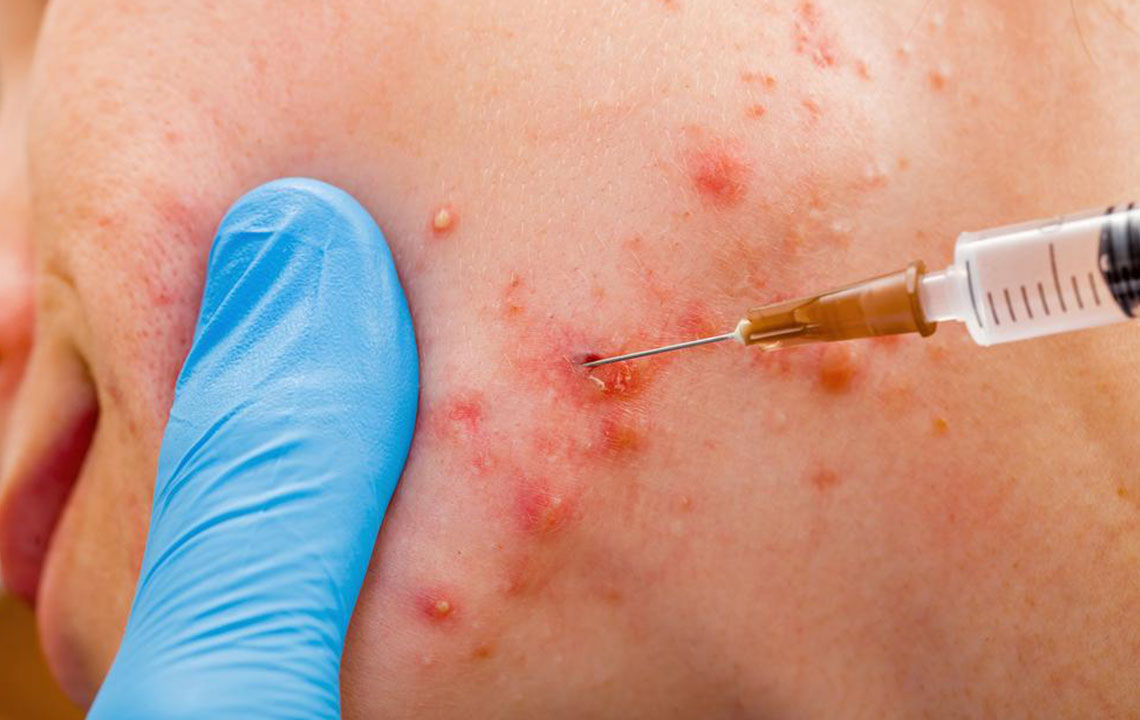4 Effective Ways to Treat Acne
Acne or “Acne Vulgaris” is a long-term skin infection that may lead to the formation of pimples, blackheads, whiteheads or even formation of cysts. Skin surface of human beings contains a number of invisible tiny pores called hair follicles. These hair follicles further comprise of sebaceous glands also known as oil glands. These oil glands further produce sebum which helps in keeping our hair and skin moist.
Sometimes what happens is that the sebum that carries the dead skin cells along the follicle gets clogged in the skin pore leading to the blockage of the follicle’s passage.

2017 Best Acne Treatments
The 2017 best acne treatments are discussed in the detail below:
Over-the-Counter Medications: This is a simple treatment that involves using soaps, gels, foams, creams, and lotions for getting rid of acne. Various companies have been providing various acne-fighting products to make your skin look clear and beautiful. Some of the ingredients that are present in these products that in turn help to get rid of acne include:
- Benzoyl Peroxide : Benzoyl peroxide is an FDA approved ingredient that helps fight P. acne bacteria and when you apply it on your acne ridden skin, benzoyl peroxide breaks down into oxygen and benzoic acid which in turn help in ripping across the bacteria’s membrane. Benzoyl peroxide helps kill P. acne bacteria within 48 hours after you apply it on your skin. Benzoyl peroxide also helps in destroying dead skin cells accumulated around the pores. However, Benzoyl Peroxide is not suitable for people having dark toned skin as applying it may bleach their skin.
- Salicylic Acid : This is a type of beta hydroxy acid that has keratolytic properties. When applied on the skin, it helps fights bacteria by hindering them from multiplying. Salicylic acid also helps in opening the blocked pores and shedding of membranous tissue that covers the follicles’ surface. It also minimizes inflammation and swelling but may cause stinging in those with sensitive skin type.
- Azelaic Acid : This is effective for mild or slightly moderate acne and helps minimize the skin cell build up in the follicle. Azelaic acid is also known for its anti-inflammatory and antibacterial property but is found to be not that effective. The only drawback of azelaic acid is that it may cause skin irritation in some individuals.
- Sulfur : Sulfur helps in drying out of sebum and also helps clean out bacteria, dead skin cells and excessive oil from the skin. It is found to be effective and a better option for patients who do not react to benzoyl peroxide well. Applying sulfur may show effective results but it produces a bad odor that needs to be tolerated for a while.
Corticosteroid Injection: This is also called a steroid shot and is a treatment meant for people who develop an acne cyst. This is the fastest known and one of the best acne treatment for getting rid of cystic acne. Corticosteroid injection helps in minimizing the inflammation caused due to cyst but is not anti-bacterial i.e. it does not kill bacteria accumulated in the follicle. When you get this steroid shot, you may start seeing the result just within 4-5 hours and the improvement of the cystic acne may continue over the next days to come.
Photodynamic Therapy: Photodynamic Therapy or the Blue Light Therapy makes use of a light source such as blue light in amalgamation with a topical photosynthesizing solution to focus a selective tissue for destruction. It is one of the best acne treatments of 2017.
This treatment is carried out in three steps:
- Application of photosynthesizing solution to the skin such as Levulan
- The solution applied is left on the skin for 15 minutes or for even 18 hours, the time depends on a person’s condition.
- The acne affected area where the solution was applied is exposed to a light source such as BLU-U or ClearLight.
Retinoids or Vitamin A: Topical retinoids such as Tretinoin, Differin, Retinol or Tazorac have been extensively used for treating acne, and have structures equivalent to vitamin A. Isotretinoin, on the other hand, is an oral retinoid that is found useful for treating severe nodular acne or moderate acne which has shown no effective results when treated with other milder options. These retinoids help unblock the pores, lessen sebum creation, minimize inflammation and also help in normalizing the life cycle of a follicle cell.
Side effects of topical retinoids include sensitivity to sunlight, redness or even dryness of skin and side effects of oral retinoids includes birth defects in pregnant women, depression or urge to commit suicide.


